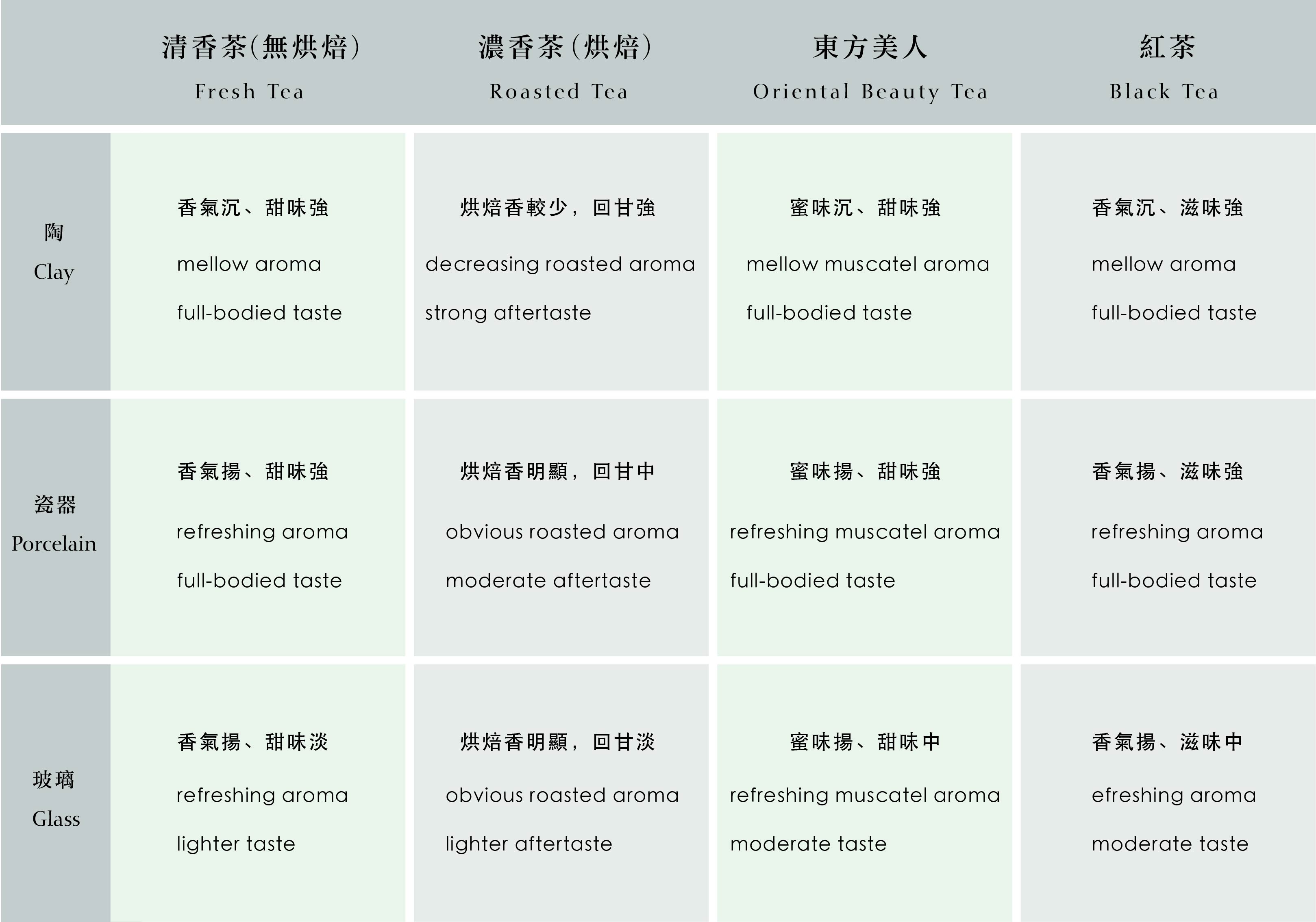
Using different kinds of material of teaware will have an influence on the taste of the tea.
Common materials for teaware include:
Clay (purple clay), porcelain, and glass.
Characteristics:
Clay (purple sand): porous material, retaining heat better
Porcelain: pores on the surface are microscopic, dissipating heat better.
Glass: pores on the surface are microscopic, dissipating heat the best.
Suitable tea types:
Clay: suitable for roasted teas, e.g., Dong Ding Oolong Tea. It mellows the tea aroma.
Porcelain: suitable for fresh teas, e.g., High Mountain Oolong Tea.
Glass: suitable for fresh teas, e.g., Oriental Beauty Tea and Black Tea.
Presentation for the taste:
Clay: full-bodied taste with deeper aroma.
Porcelain: high and refreshing aroma with a lighter taste.
Glass: high and refreshing aroma with a lighter taste.
Summary:
Full-bodied taste: Clay > Porcelain > Glass
High and refreshing aroma: Porcelain = Glass > Clay
Heat retaining: Clay > Porcelain = Glass
Q: Do I have to use the specific tea wares for specific tea types?
A: Yes, so it could present the unique flavor of that specific tea.
Q: What if I use different materials of teaware to make tea?
A: By doing so, you could adjust the tea flavor. Take Dong Ding Oolong Tea for example. If you use the purple sand clay pot to brew the tea, it will have a strong aftertaste and full-bodied flavor. If you use the porcelain teaware to brew the tea, it will have a lighter taste and evident roasted aroma, which is suitable for people not used to drinking stronger tea.
![[Tea Life] Choose suitable teaware to make tea at your ease.](../img/upload/0d04da2e5f852a3d446123ca9435c773.jpg)